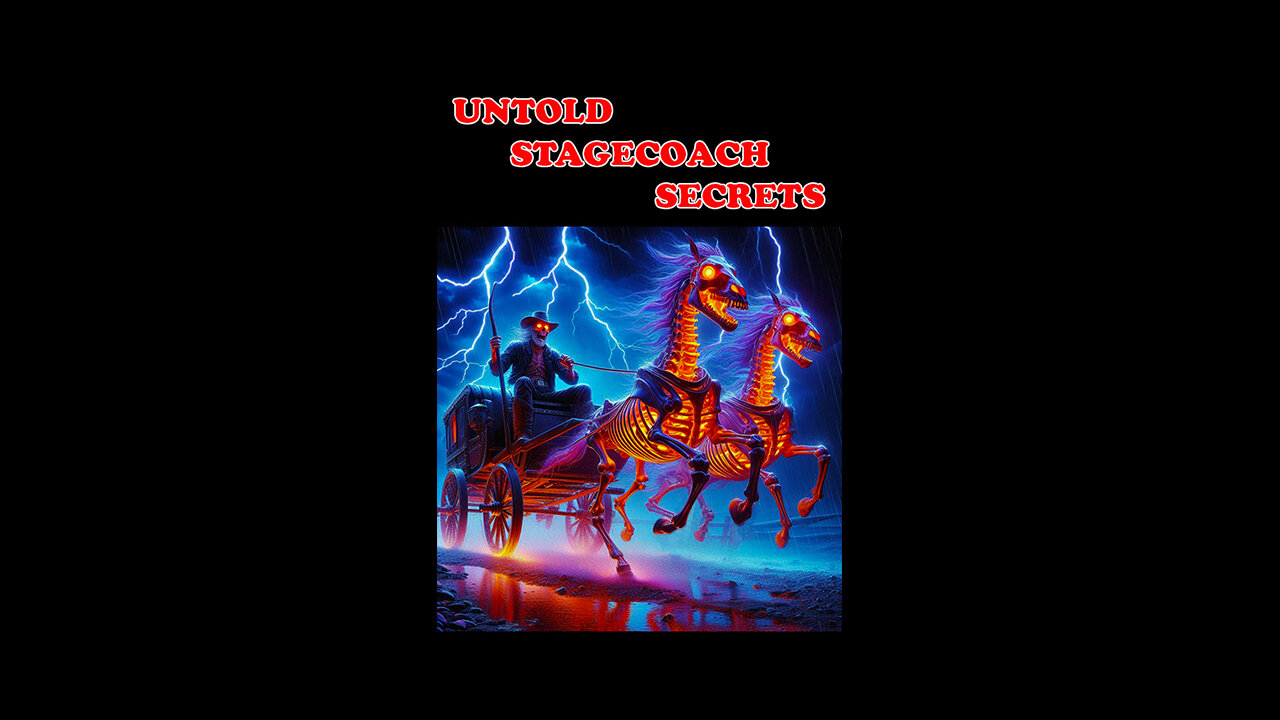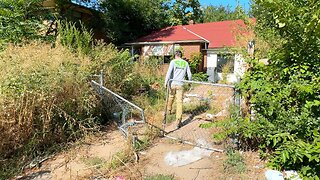Premium Only Content

What Secrets Did Western Stagecoaches Hide?
Is there any secrets that the Western Era stagecoaches hide? Watch this video clip to find out.
Grab a FREE Sahara Desert ebook HERE: https://bit.ly/3PePvYU
If you enjoy it, a sub would be awesome!
VISIT US AT: https://panther-ebooks.com/ for superb ebook stories from world renowned authors and other upcoming authors.
WHAT SECRETS DID WESTERN COACHES HIDE?
The Western coaches of the 1880s were iconic symbols of a rugged frontier, representing both adventure and danger. Yet behind their wooden frames and iron fittings, they held secrets that ranged from clever engineering tricks to wild tales of outlaws and ghostly encounters. Today, some of these stories are known to be true, while others remain shrouded in speculation, adding to the mystique of the Wild West.
One of the most fascinating aspects of Western coaches is how they were built to survive the harshest terrains. With routes stretching over hundreds of miles through deserts, mountains, and prairies, they had to withstand rough and unpredictable conditions. Coaches were often constructed with "Concord springs," a unique suspension system developed in Concord, New Hampshire. This system used thick leather straps to absorb the shocks from rough terrain, creating a smoother ride for passengers, and was so effective that it inspired vehicle suspension designs for decades. The Concord springs weren’t just practical; they were a well-guarded trade secret that set American coaches apart, making them a treasure for any stagecoach company.
Another lesser-known detail is that coaches, particularly those operated by the Wells Fargo Company, had hidden compartments for valuables. Wells Fargo coaches transported gold, cash, and other precious items through dangerous territories where bandits lurked. To deter thieves, the coaches had secret safes and hidden compartments built into the floor and walls. The exact locations of these compartments were known only to trusted employees, and it’s rumored that some compartments are still being discovered today. Legend even says that a few caches of hidden gold remain unfound in abandoned coaches scattered across the American West, waiting to be uncovered by lucky treasure hunters.
The drivers of these coaches, known as "whips" or "jehus," were often highly skilled and selected for their bravery. The most famous of them became legends in their own right. Some say they even had secret signals and handshakes to identify fellow drivers and warn of outlaws ahead. Rumors spread of drivers who could spot a horse thief from miles away or maneuver their coaches through ambushes by timing the horses’ strides just right. While no one knows how much of this was skill and how much was myth, the coaches’ success against outlaw gangs is undeniable.
Outlaws themselves left their mark on the history of Western coaches. Jesse James, the infamous outlaw, was rumored to have staged elaborate ambushes against stagecoaches, often using diversion tactics that seemed almost supernatural in their effectiveness. According to legend, James once used mirrors to reflect the setting sun and blind the drivers, an account that might be true or simply a tale to emphasize his cunning nature.
Even ghost stories surrounded these coaches. After deadly robberies, locals sometimes reported ghostly sightings of coaches driven by phantom drivers through the night. Some believed these were the spirits of drivers and passengers who had lost their lives on these perilous routes, forever bound to the road. While there’s no proof that these ghostly apparitions exist, their stories added to the air of mystery around the Western coaches.
The secrets of Western coaches remind us of the ingenuity, danger, and mystery of the Wild West. Whether through engineering marvels, hidden treasures, or eerie legends, these stagecoaches remain an enduring symbol of an adventurous era that continues to captivate our imaginations.
-
 1:21:15
1:21:15
Tactical Advisor
2 hours agoThe Vault Room Podcast 008 | PSA Changing the Firearms Game and Trump Exposing Government Spending
29.3K4 -
 3:09:57
3:09:57
LittleDude games
6 hours agoSaturday Fortnite Hunters // LittleDude
32.9K8 -
 14:34
14:34
Misha Petrov
17 hours agoTikTok’s WOKE “Mean Girl” Is Insufferable
53.6K65 -
 10:46
10:46
Mike Rowe
1 day agoRiley Gaines Was Right All Along | The Way I Heard It with Mike Rowe
80.9K83 -
 25:19
25:19
SB Mowing
1 day agoI had to do a DOUBLE TAKE because I couldn’t see the house at first
48.5K23 -
 2:15:43
2:15:43
I_Came_With_Fire_Podcast
12 hours agoChina's Global Strategy, US Military Challenges, & The Battle for Influence
34.8K7 -
 2:37:42
2:37:42
FreshandFit
16 hours agoGreg Doucette Guessed Their Body Fat Percentages And THIS Happened...
153K115 -
 5:08:30
5:08:30
Akademiks
17 hours agoKendrick Lamar SPEAKS for first time SINCE BEEF in new Interview. Drake preppin new album. YE WYLING
188K28 -
 2:12:17
2:12:17
Tucker Carlson
17 hours agoMike Benz Takes Us Down the USAID Rabbit Hole (It’s Worse Than You Think)
332K1.16K -
 1:47:17
1:47:17
Roseanne Barr
21 hours ago $44.86 earnedThe Most Offensive Comic, Leonarda Jonie | The Roseanne Barr Podcast #86
201K238